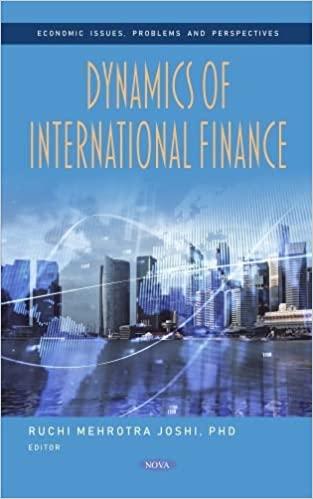Question
Information on calls and puts The spot price of this share will be determined by the student number using the last digit of the student
Information on calls and puts
- The spot price of this share will be determined by the student number using the last digit of the student number. The spot price of the share will be (last digit of the student number*10+6). For example, if the last digit of the student number is 5, the spot share price will be 5*10+6=56. If the last digit of the student number is 0, please replace it with 4, i.e. the spot price will be 4*10+6=46.
- The strike price of the options will be the share price you just calculated +2. For example, if the share price calculated based on the student number is 56, the strike price of the options will be (56+2)=58.
Based on this spot price and this strike price as well as the fact that the risk-free interest rate is 6% per annum with continuous compounding, please undertake option valuations and answer related questions according to following instructions:
Binomial trees:
Additionally, assume that over each of the next two four-month periods, the share price is expected to go up by 11% or down by 10%.
- Use a two-step binomial tree to calculate the value of an eight-month European call option using the no-arbitrage approach.
- Use a two-step binomial tree to calculate the value of an eight-month European put option using the no-arbitrage approach.
- Show whether the put-call-parity holds for the European call and the European put prices you calculated in a. and b.
- Use a two-step binomial tree to calculate the value of an eight-month European call option using risk-neutral valuation.
- Use a two-step binomial tree to calculate the value of an eight-month European put option using risk-neutral valuation.
- Verify whether the no-arbitrage approach and the risk-neutral valuation lead to the same results.
- Use a two-step binomial tree to calculate the value of an eight-month American put option.
- Calculate the deltas of the European put and the European call at the different nodes of the binomial three.
Note: When you use no-arbitrage arguments, need to show in detail how to set up the riskless portfolios at the different nodes of the binomial tree.
Black-Scholes-Merton model:
Using the information given above regarding the spot and strike price, risk-free rate of return and the fact that the volatility of the share price is 18%, answer following questions:
- What is the price of an eight-month European call?
- What is the price of an eight-month American call? What is the price of an eight-month European put?
- How would your result from k. change if a dividend of $1 is expected in three months? How would your result from k. change if a dividend of $1 is expected in ten months?
Note for calculations with the BSM model: Keep four decimal points for d1 and d2. Use the Table for N(x) with interpolation in calculating N(d1) and N(d2).
Finally,
- Compare the results you obtained for the prices of European puts and calls using binomial trees and Black-Scholes-Merton model. How large are the differences when expressed as a percentage of the spot price of the share? Provide a possible explanation for these differences.

Step by Step Solution
There are 3 Steps involved in it
Step: 1

Get Instant Access to Expert-Tailored Solutions
See step-by-step solutions with expert insights and AI powered tools for academic success
Step: 2

Step: 3

Ace Your Homework with AI
Get the answers you need in no time with our AI-driven, step-by-step assistance
Get Started


